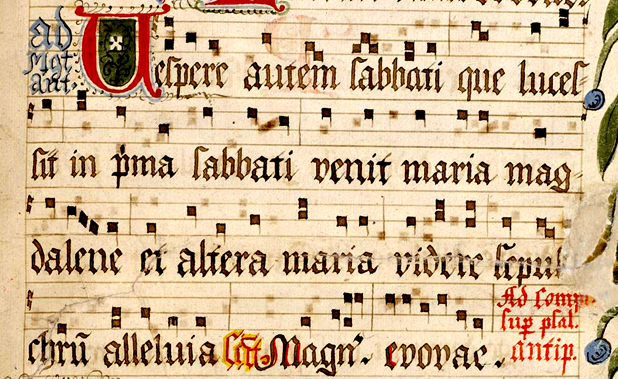What are Gregorian Chants?
What are Gregorian Chants?
Share
The Roman Catholic Church considers Gregorian chants are appropriate to Roman liturgy or worship and therefore given priority during liturgical services. This is based on the Vatican Council II or Second Ecumenical Council Constitution on the Sacred Liturgy. Gregorian chant is the ritual music of the Catholic Church that accompanies holy mass text as well as divine office or canonical hours.
The chant was named after Saint Gregory I who was pope from 590 until 604. King Charlemagne or Charles the Great (768 – 814) made the Gregorian chant mandatory during his reign. There was another chant (Galiican) that was used commonly in Roman rites. The two merged between the 8th and 9th centuries ultimately evolving to the present form. Gregorian chants refer to the music and liturgy of the Catholic Church.
Origins
Texts are almost totally scriptural and originated from the Psalter, the volume that contains the Bible’s Book of Psalms with devotional material like the Litany of Saints and liturgical calendar. Christians sang chants as melody, without accompaniment, and in unison for many centuries. This style remains the best way of singing the Gregorian chants. The original composition was 100 percent Latin. Its melodies were associated with Latin terminologies and accents.
There are exceptions such as chant hymns because the melodies are standard and not connected to Latin text. Gregorian is in free tempo minus the time signature. All types of liturgical text were set in chants since the mass was sung in Gregorian chant during the Middle Ages with several melodies. These texts included prayers, readings, psalms, antiphons, hymns, responses, mass proper, and mass ordinary.
Pope Gregory had no role in creating and compiling the chant melodies but these were named after the great church leader. Many music forms and styles are similar to the Gregorian chant like Taize (Christian monastic chanting) which is also in Latin. However, musical style is relatively different. Taize is accompanied by instruments with choral harmony and metered variation.
Numerous psalm tones were written since the Second Vatican Council like that of the Gregorian pitch with free cadence and repeated melodies. These psalm tones go well with Latin but not the English accent. For psalm verse in the English language, it is more practical to use sounds made for English.
Modern Times
In 1994, Benedictine monks belonging to the Order of Santo Domingo de Silos from Spain released a soundtrack with the title, Chant. Many people were amazed since the little known recording made it to the Top Five of the United States pop chart. These monks came out with another record after several years (Chant Noel), a collection of old Christmas melodies. Chant II was made public in response to public demand.
At this time, many youngsters continue to ask about the origin of this remarkable music and its use in the Catholic Church. Until the closing stages of the Second Vatican Council in 1965, the Gregorian chant was heard every Sunday in practically all dioceses within the country. Suddenly, the chant vanished and seldom heard in church services.
The chant is not familiar to many people. It is essential to listen to the chant carefully and appreciate the inherent beauty, historical significance, and liturgical value. The text’s solemnity is elevated to a higher level because of the invocation to a musical line. Gregorian melody is specified by small inscriptions above the text usually in the form of square or diamond shapes. Pitches were written accurately using an arrangement of letters towards the end of the 11th Century.
It is a blend of prayer, love, meditation, worship, and respect. The chant carries people in song and rhythm. Gregorian chant means heightened verbal communication with seamless integration of prose and music to add solemnity in Christian veneration. The text is at the core of the sacred music’s composition. Revered melody clothes the liturgical text moving the faithful to prayer and devotion.
Catholic Church clergy, liturgists, musicians, and theologians must mull over the reasons for new interest in the Gregorian chant. Perhaps, this renewed curiosity imparts the desire to explore the world of peace and quiet without the distractions of a frantic and sometimes discordant life.
Listening to the Gregorian chant can turn out a poignant experience. Just review church manuscripts on holy music to obtain the guidance on how and when these hymns can be sang during the mass, other rites, and Liturgy of the Hours. These documents will disclose the purpose of contemporary music for divine worship.
Ironically, the Gregorian chant is available in music stores, radio, or even concert halls but conspicuously absent in many local Catholic Churches. Latin like Sanskrit is a sacred language preserved for church usage which could be the reason for this development.
You Might also Like










Connect with Us: